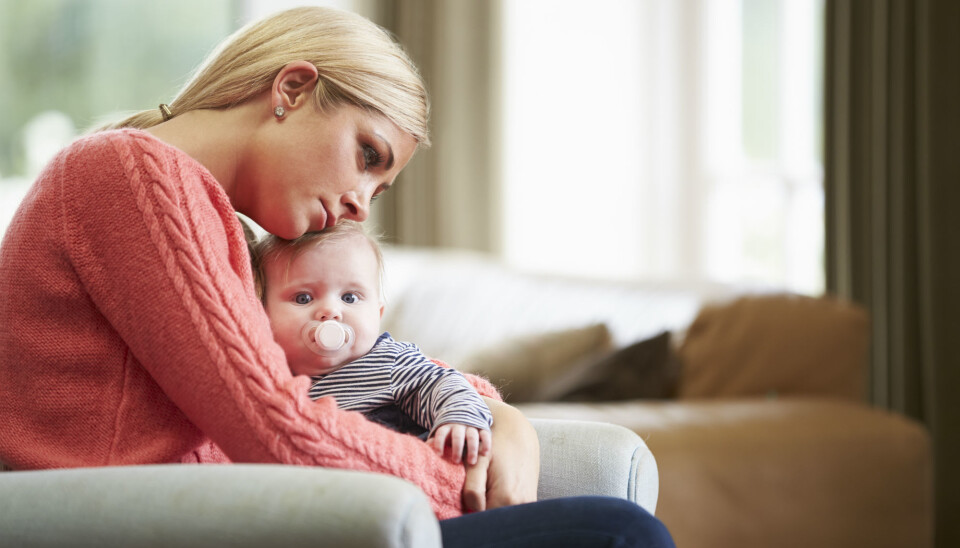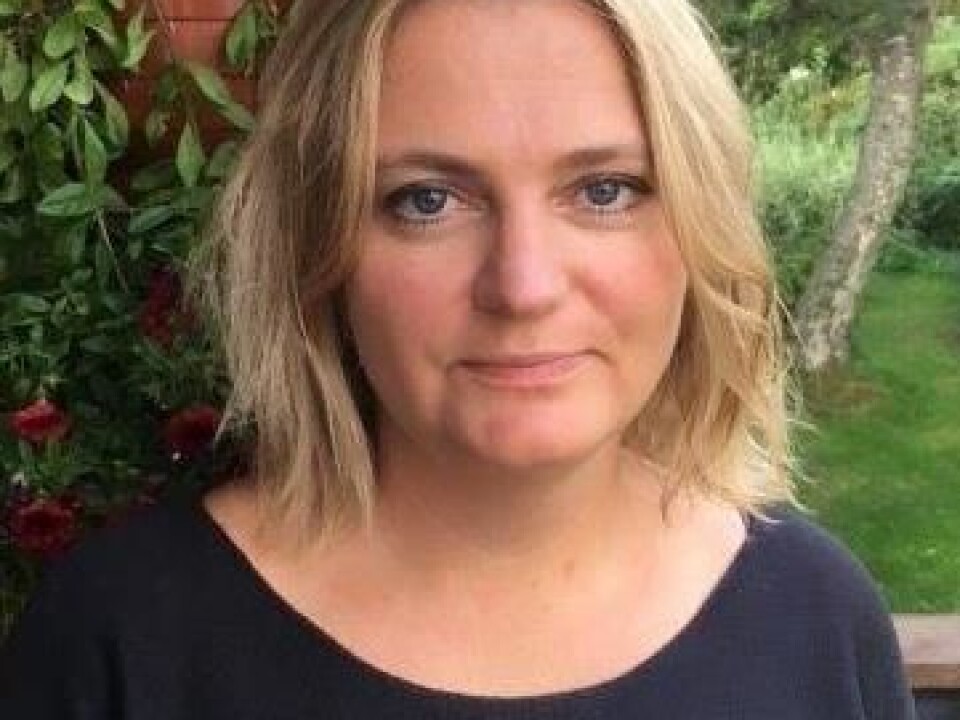
Mum takes more responsibility for the children
The social and moral responsibility for the children lies primarily with the mother, particularly at celebrations and festive seasons, according to Kristine Warhuus Smeby.

This article was originally published on Kilden - Information and news about gender research in Norway. Read the original article.
Mother and father still don’t carry the same responsibility at home. Not even when both mother and father want it. The key may lie in ‘the third shift’, according to Kristine Warhuus Smeby.
The sociologist has recently defended her PhD thesis on equality within the third shift, a topic she claims has been neglected in the debate on gender equality.

“The third shift refers to the question of who takes the emotional and moral responsibility for the children,” says Smeby.
“I found that the mother takes the larger share of this responsibility even in families where both parts make an effort to secure gender equality both within and outside the home.”
Describes the everyday life in the families
Smeby has interviewed twelve heterosexual couples between the ages of twenty-eight and fifty-three, with higher education and responsible fulltime jobs, located in larger Norwegian cities. All the couples had at least one child between one and two years old who had just started kindergarten, or they had just finished their parental leave when they were interviewed. All except one of the interviewed fathers had taken out their ten-week paternal leave quota.
“I wanted to explore what responsibility is involved in administering the everyday life in families where both parents work fulltime,” she elaborates.
In order to shed light on this question, she asked her interviewees about selected topics such as the distribution of responsibility to collect the children in kindergarten, to stay at home from work when the children were ill, job traveling, arranging children’s birthday parties and Christmas preparations.
“The aim was to find concrete experiences within authentic situations from the informants’ everyday lives. I wanted to explore situations that were common to all of them, and that were closely related to the children,” says Smeby.
“What is interesting in order to understand the third shift is not how much time mother and father spend on the various tasks, but the relations, practices and processes.
According to Smeby, everything was set for gender equality between the couples she interviewed. They all had fulltime day-jobs and the children were in kindergarten. Yet the distribution of the family responsibilities was nevertheless gendered.
“The mothers in my selection of participants generally took more responsibility for the children socially and morally than the fathers did,” she says.
“When you study apparently equal situations in depth, it becomes clear that what seems like equal distribution may not be so equal after all.”
Parental leave affects the distribution
According to Smeby, the long parental leave is one of the reasons why mother takes more responsibility.
“The mother takes longer parental leave, which gives her other experiences in her relation to the child. But the father can also take responsibility, something he does to a larger extent in cases where he is at home with the child over some time while the mother is at work.”
Smeby wanted to take a closer look at what consequences the ten-week father’s quota might have for gender equality within the third shift. She is of the opinion that the father’s quota has major potential if it is used correctly.
“I noticed that when fathers took ten weeks or more over a continuous period while the mother was working, it strengthened their own ability to sense the child’s needs. They took more responsibility for the children than fathers who had not been at home with the child for the same amount of time.”
Several of the fathers that Smeby spoke to divided their parental leave in order to adjust it with work. And if they had to come in to work during their leave, the mother had to ‘fill the holes’ in the father’s parental leave.
“The father’s leave became a load on the mother if she had to stay at home during her own worktime,” says Smeby.
She states that it is important to be aware of how the father’s quota is used.
“The mothers that I spoke to used their parental leave to build networks, which is important for integrating the child into the local community. The fathers, on the other hand, often divided the father’s quota or used it together with the mother, and they therefore felt less of a need to establish or maintain social networks around the children during their period of parental leave.”
Work life formalities also affect how the father uses his parental leave.
“The mother often had a substitute at work while she was on leave; the father doesn’t. Therefore, it is more difficult for him not to come in to work during his leave if he is needed. Within some professions this is likely to change if the paternal leave becomes longer,” says Smeby.
Expects more from mother
“For instance, I found that the mother often made use of her flexibility at work in order to pick up the child in kindergarten early. The father did not.”
Other research has shown that kindergarten staff generally approach the mothers, even if the father is the one who delivers and collects the child in kindergarten.
“This contributes to a strengthening of the principle that the main responsibility lies with the mother. For instance, she is the one they contact if the child is not suitably dressed, doesn’t have enough food, or lacks a costume at the kindergarten carnival,” she says.
“The mother senses some expectations that make her feel guilty more easily than the father if these expectations are not fulfilled. She thus carries a responsibility for fulfilling society’s expectations that the father to a large extent is excused from.”
The gender differences when it came to taking responsibility for the children were much bigger than Smeby had originally believed before she started working on her thesis.
“The mother took more responsibility particularly in relation to the arrangement of festive seasons, which require a lot of planning when you also have a fulltime job. The distribution of responsibility between the couples was more equal in everyday situations.”
“But what is the reason why the mother takes more of the social and moral responsibility than the father?”
“A lot of it has to do with social expectations,” according to Smeby.
“Society expects other things from the mother than from the father when it comes to the children. The demands to be a good mother are stricter than those for being a good father. The mothers I have spoken to also cared more about what other people thought about them than the fathers did.”
Some of the mothers in Smeby’s selection nevertheless stood out in this respect.
“A couple of the mothers that I interviewed were past forty and had children from before. They had jobs within the private business sector that involved much responsibility and travelling, and these women did not to the same extent care about others’ expectations to them,” she says.
“They created a different space for doing things their own way, and were not as preoccupied thinking about what others thought about them as mothers as younger and less experienced mothers.”
But they were no more equal to their partners within the third shift than the other mothers, quite the contrary.
“They were aware that they broke with existing expectations, and instead they compensated by being ‘good mothers’ on other areas.”
Mother takes responsibility for celebrations
All the mothers took the main responsibility for children’s birthday parties and other celebrations, also for one-year birthday celebrations that coincided with the father’s leave.
“When the mothers travelled for work, they made sure that this would not involve any extra work for the fathers while they were gone. None of the fathers did the same. Neither did any of the fathers arrange children’s birthday parties on their own.”
When the father disclaims the responsibility, the mother takes on the responsibility herself.
“Perhaps the fathers don’t consider celebrations of birthdays and holy days as important as the mothers. Shouldn’t they be excused then?”
“Christmas preparations and birthday celebrations are important rituals that socialise the children and tie society together,” according to Smeby.
“The mothers’ efforts in connection to the festive seasons are often ridiculed, but they bring good memories, form bonds, and create social relations. Celebrations help gather friends and family and contribute to the continuation of traditions. They are also about providing the children with a sense of belonging and creating common frames of references.”
Many of the fathers that Smeby interviewed have strategies in order to avoid participation in both the preparations of such celebrations and the celebrations themselves.
“When the father disclaims the responsibility, the mother takes on the responsibility herself,” says Smeby.
Mothers need to negotiate
According to Smeby, we don’t talk much about who takes the moral responsibility for the children.
“I think that much of the reason behind women’s high sickness absence has to do with the uneven distribution between parents within the third shift. Most women don’t want the entire responsibility alone, but they nevertheless end up with it, and this is ignored.”
“What can be done in order to achieve gender equality within the third shift?”
“The mothers have to take initiative to negotiate with the men about sharing responsibility within the third shift. Making the third shift more visible may also contribute to the fathers taking more initiative and to discussions that may alter the couple’s everyday practices,” says Smeby.
According to her, the third shift should gain greater attention in the public debate on gender equality.
“It is taken for granted that the mothers take social and moral responsibility for the children. The consequences that this may have for gender equality therefore go beneath the radar. Additionally, many mothers find it easier to take the full responsibility themselves than delegating to the father.”
































